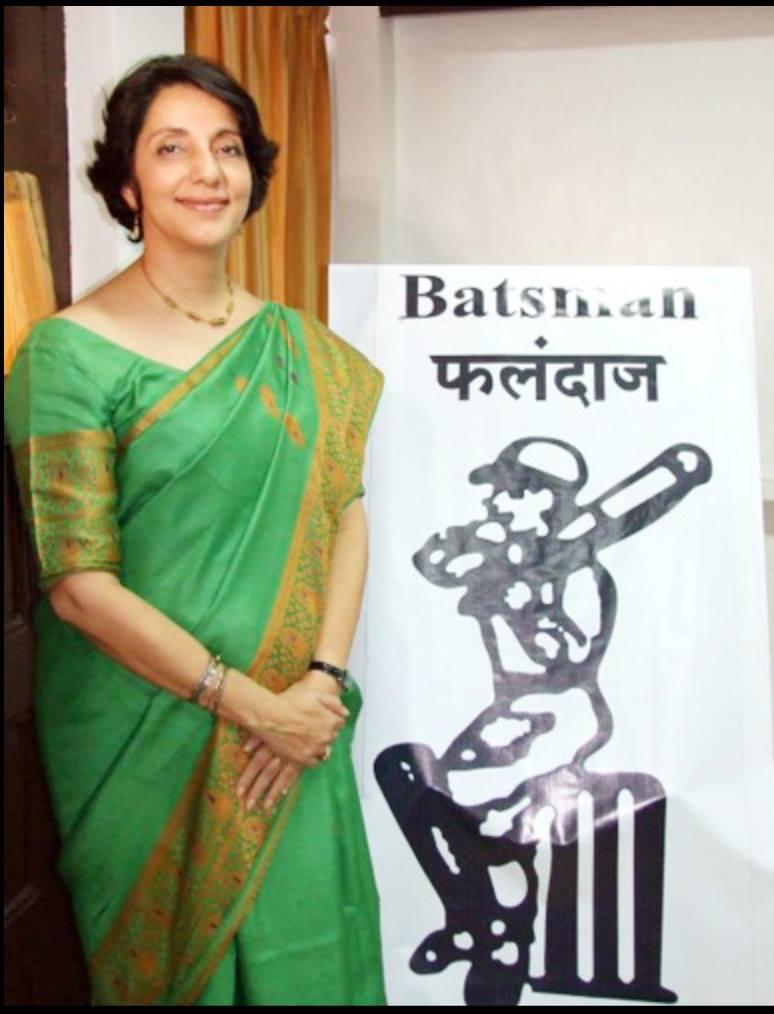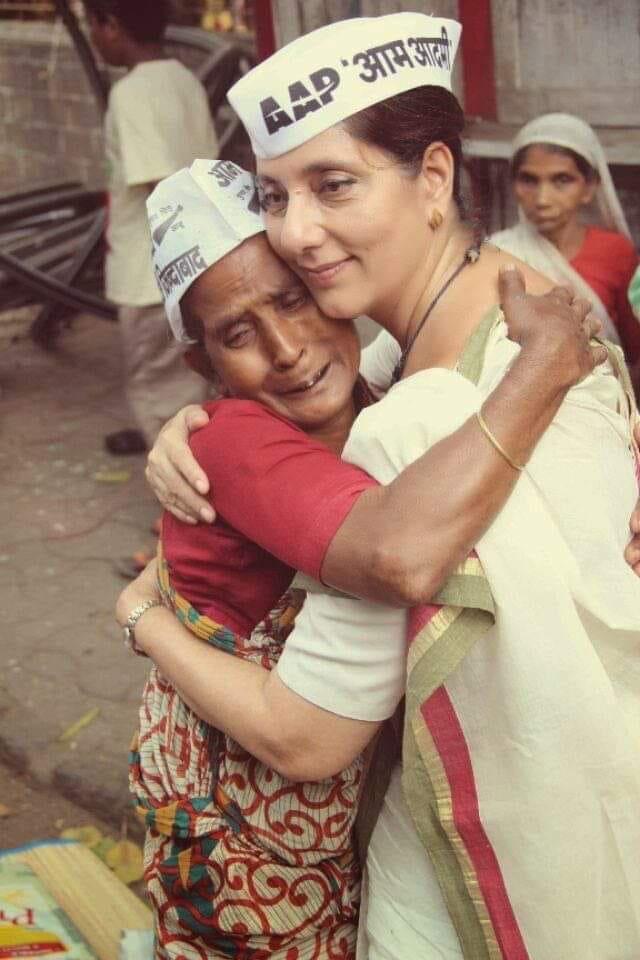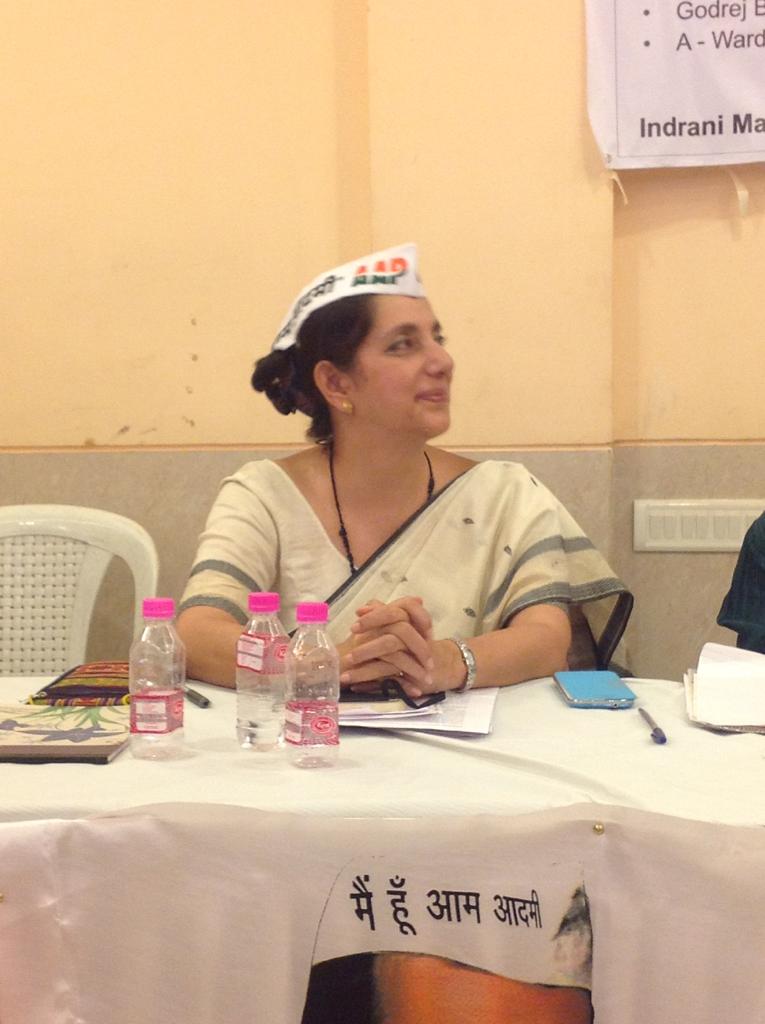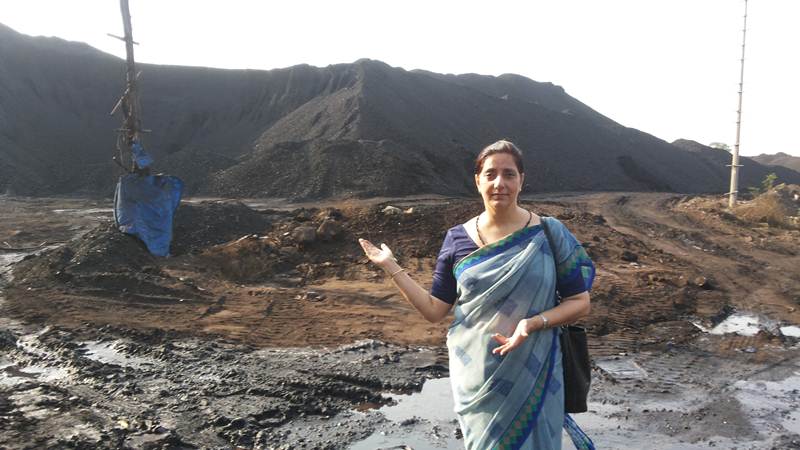On 11 January 2019, Meera Sanyal, daughter of India, unable to fight the cancer that had all but consumed her in the last two months, died.
So much has been written about her – the bold move by a successful professional banker to enter politics as public service, the admiration she received, the love she gave and got, the ideas and projects she sowed and pursued, the financial smarts and experience that made her a rare, credible economic analyst – and the difference it all made to the country.
Meera’s entry into public life through the electoral process made it acceptable for India’s middle class to follow her lead. That socio-economic cohort with its skills, education, experience and influencing ability, had abandoned Indian politics for decades after it became a caste and poverty game in the 1980s and 1990s. They found no place for themselves, and many left the country.
The 2008 terrorist attacks in Mumbai changed everything. Meera’s mentor-boss, Ashok Kapoor, was killed, and the city and state governments were in shambles, with no answers. Meera began a search for like-minded Mumbaikars desperately seeking a responsible government. In meetings in suburban community halls, at soirees in South Mumbai, at the discussion fora of like-minded people like Dr. Jayaprakash Narayan of the Lok Satta Party, often spotted were an elegant woman in a sari, accompanied by a tall slim man, in the audience. Their questions were always: what can we do? What is your solution, and how can we participate? Everyone was in search of a candidate from within the groups, but none were willing – politics felt like another world.

When in April 2009, Meera announced that she herself would seek a seat in the Lok Sabha from South Mumbai, it was a welcome surprise. Within hours, she had a flock of people join her campaign, the lost Mumbaikars looking for a relatable leader. But it was more: the candidacy rocked the nation, legitimising middle class entry into politics and policy. Before long, other candidates, like dancer Mallika Sarabhai in Ahmedabad and entrepreneur Capt. Gopinath in Bangalore, had jumped in, announcing their candidacies for an alternate politics.
Soon, scores, then hundreds, of young people began following Meera, joining in her rallies and plunging thereafter into the anti-corruption movement. The identification with her and the cause she supported was complete. “Meera is us on the street,” people would say.
She began a padyatra across South Mumbai, her chosen constituency, to understand the city’s every corner, and to persuade citizens to think beyond the established parties and vote for clean politics. For, she reminded them, “politics is a noble public service.” Clad in saris and cobalt blue leather chappals made in Kolkata, Meera and her band walked and walked and walked. There wasn’t a shrine she didn’t stop at, there wasn’t a woman she didn’t talk to.

Best of all, Meera loved walking in the narrow lanes of Mumbai’s slums, where homes are spotlessly clean, children are scrubbed and ready for school, and where people always offered water to passers-by – even though they had no running water at home. They had everything – a job, an insurance policy, children in school, television and phones, transport – except a pucca home. Mumbai, said Meera, is a middle-class city without affordable housing. She wanted to make policies that would make life in the city dignified and liveable.
Meera didn’t win in 2009 – but like for Moses, the political seas had parted. The anti-corruption movement, and then the arrival of AAP, was the indicator of Meera’s success.

Meera broke the mould everywhere. As a student, she was tops, opting for France’s INSEAD over American universities because, she said, they were too insular. Their idea of “international” was the U.K. and Spain, India and China were nowhere in their sights or syllabi. At ABN-Amro, later Royal Bank of Scotland, Meera as chief executive got mandates for the company that the very big boys vied for, and kept away from the glamorous debts that have slain so many of her peers in Indian banking.
And Meera always wore saris. When her foreign bosses asked her how she hoped to be successful in international banking wearing native dress, she replied, “Wait and see.” They saw, and never questioned her again.
As the child of a vice admiral of the Indian Navy, she had a clear and rooted sense of India, with all its potential and drawbacks, none of which made her morose. Instead, with the determination that a defence services background gave her, she worked to overcome the hurdles. During her campaign, she made a distinction between creating jobs and creating entrepreneurs, preferring the latter for India at its stage of development. She should know; as the head of the RBS Foundation, she helped create over 6 lakh women entrepreneurs, who began small businesses from rice to mushroom production.
It is in her home city of Mumbai that Meera has made a real difference. The Navy child physically saw Mumbai from its eastern sea board, rather than from the western shore of Marine Drive, Carter Road and Juhu. She saw the shining shipyards and the dockyards of the Navy, but also crumbling Lakdi Bunder, the derelict wasteland that Sewri and Cotton Green had become, the collapse of old mercantile Bombay. She also knew that 775 acres of eastern sea board land belonged to the city – it was mandated to citizens in 1980 by then Prime Minister Indira Gandhi when the development of Nhava Sheva was approved.

But Mumbaikars never saw the land, which is controlled by the Port Trust and misused by sundry players. Major corporations still retain possession of huge warehouses despite expired leases. The Maharashtra State Electricity Board imported coal from Indonesia at Hajee Bunder to ship for use at its power plants in Nashik and Bhusaval. No pollution control norms were observed, making the whole area black with dust, the land a series of mountains of combustible coal, and creating a respiratory epidemic in the Sewri area. Few citizens went to the Sewri Fort, with its stunning view of the migratory flamingos nesting in the winters.
Most beautiful of all is an untouched, 15-acre forest within – Hay Bunder, perfect for trekking, picnics, play, romance and film locations.
Meera vowed to restore this land to its rightful owner – the citizen of Mumbai. It was more than any MP or MLA or corporator had done for the city since the British Raj. Through a 2014 Public Interest Litigation filed along with colleagues, like trusted friend and retired vice admiral I. C. Rao, and limited funds, Meera took on the state and the port authorities. The revelations of the menace of coal dust within the portlands area attracted the media, which supported the environmental campaign against the coal dump. Eventually, the port and the government backed down, and the import of coal through Hajee Bunder docks was stopped in 2015.
A beautiful sight emerged. With greenery restored, the Sewri Fort had visitors and the flamingos could be viewed. Meera’s group organised football tournaments in the Hajee Bunder grounds to celebrate improved air quality, the Kohli Samaj residents held a food festival and the respiratory epidemic receded.
By this time, Meera had a band of loyal followers, those who loved the city equally. They dreamed about what this vast land on the city’s eastern sea board would look like, if given back to citizens as envisaged by Indira Gandhi. Meera initiated charettes, bringing together young architects, conservationists and dreamers, and a vision emerged, under the brand of APLI – A Port Lands Initiative. The area would have colleges, schools for the disabled and the arts, performance centres, skilling centres, marinas, sports facilities, all connected by transport lines. The heritage part of the area, like the old Cotton Exchange, would be restored for tourism, a slice of Mumbai’s immensely successful mercantile history. It had everything except housing and commercial buildings to keep the land sharks at bay.
When the plan was revealed at a street exhibition in Mumbai in November 2014, it garnered enthusiasm not just from Mumbai and India, but from overseas. Columbia University’s Graduate School of Planning and Preservation and the Indian Merchants Chamber joined the cause – and much of it became part of the Mumbai Port Land Development Report, with the support of Transport Minister Nitin Gadkari. The Draft Development Plan was formally published on 27 December 2018: Meera’s dream for the city will now be realised.
This is more than any politician has done for any city in India. Meera ran for election under the Aam Aadmi Party banner in the 2014 national elections, with this vision in mind. The calcified candidates of the old dynastic parties of Mumbai – the Shiv Sena, MNS, the Congress, the NCP – attacked her viciously during the campaign. They continued to mock her as the “Malabar Hill Memsahib” – a fact she never denied. Meera wasn’t afraid of being middle class, and she wasn’t afraid of being herself.
This authenticity of person and ideas gained many admirers, not just among India’s youth yearning for a new era, but amongst the establishment too. During her padyatras, Meera even went into the Sena and MNS lairs, where other candidates dared not enter. Within, Meera was given a warm welcome – word had been sent to the constituencies that no harm should come to her, that she should feel free to campaign any place she wanted.
Often, the simple folk of Mumbai who were used to nothing changing, would ask Meera in wonderment, Madam why are you running when you know you will not be elected? And Meera would tell them, “I am running for you, for me, for the country. I may or may not win, but I will run again and again and again, and we will change the country.”
In a very short time, Meera and the idea of Meera, has brought change to Mumbai, and to India.
Manjeet Kripalani served as Press Secretary for the Meera for Mumbai campaign in 2009, and Campaign Adviser for the 2014 election. She is currently Executive Director, Gateway House.
A version of this article first appeared in Scroll.in
This article was exclusively written for Gateway House: Indian Council on Global Relations. You can read more exclusive content here.
For interview requests with the author, or for permission to republish, please contact outreach@gatewayhouse.in.
© Copyright 2019 Gateway House: Indian Council on Global Relations. All rights reserved. Any unauthorized copying or reproduction is strictly prohibited.


